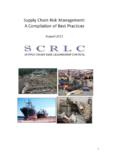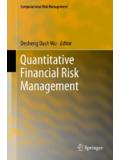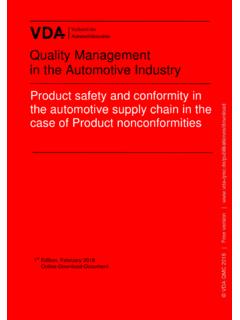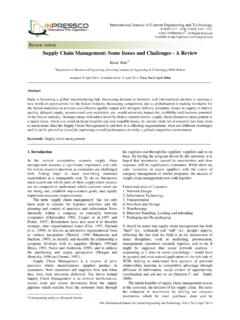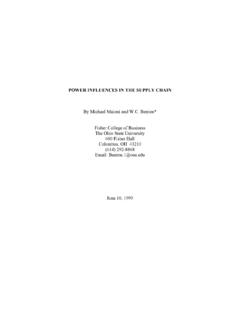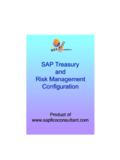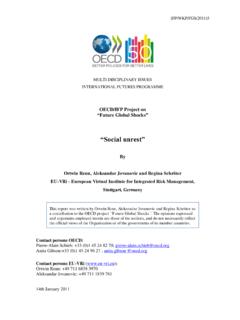Transcription of Explaining Push and Pull Models - China Supply …
1 push and pull ModelsUnderstanding the push ModelNovember 11, 2007 Two predominant systems in Supply chain operations are the push and pull Models . With increasing global operations and expanding Supply chains, companies are increasingly turning to pull methods, yet it is important to view both systems and the important role each plays. The fundamental difference between a push and pull model is an important one to key differentiator between the two systems involves inventory management. In a true push model , stock is pushed up the Supply chain generally held at the retail level or an offsite warehouse location to ensure customer demand is satisfied.
2 This limits the occurrence of stock-out. The pull system turns this around and moves inventory further down the Supply chain, to the manufacturer, supplier or even the raw material processor. Here, inventory is looked at in a different way as we will describe later. The effects of each system greatly influence the profit generation potential of the system, hence we will also look at the influential factors impacting each material flow model . But first, the question is why? Why are more companies turning to pull systems instead of push Models ?The reason is fairly basic. Again, it involves inventory and the addition of flexibility.
3 When we think about these two Models in the global context, consider the cost of maintaining inventory in the US or Europe compared to China for example. The cost of inventory holding in China , where much of the worlds manufacturing is now conducted is much lower. By moving inventory down the Supply chain, companies create an advantage in terms of inventory holding costs. This means pull systems draw demand forecasts in local markets, and plan for in-transit inventory and lead times in overseas delivery to account for customer other reason is flexibility, and this influences both global and local operations.
4 If a particular product is not selling, if inventory must be moved from one location to another, if demand patterns change, pull systems are better equipped to adjust for these changes. Inventory importantly translates into capital movement, which in the case of a push model is less flexible. With a basic understanding of push and pull systems, we will now turn our attention to a more detailed look at each. By viewing more closely these two important Models , we begin to see where each is applicable in current operations, how the system can be effectively managed and lastly, what are the key factors to consider when determining whether a transition from one model to another will increase profit generation.
5 The push model is a classic Supply chain model , which places product upstream in the Supply chain where it is required. Importantly, this commonly occurs before it is needed to ensure demand is fulfilled. What we often see is demand forecasting predictions for the end customer, and appropriate levels of inventory to satisfy those requirements. The model commonly follows a similar pattern throughout the Supply chain so that inventory is maintained at each step in material flow process to ensure future demand will be met. Multiple Resource Planning (MRP) is the common scheduling procedure companies implement toKONG AND ALLAN KONG AND ALLAN forecast demand and production planning.
6 Here is a basic diagram of the operational flow. In this case we assume 100 products is the average demand:In the most general sense, the push model literally pushes product upstream to ensure each customer in the Supply chain has the product they need. Some common product segments we see the push model used in are household goods like toilet paper, laundry soap, or commodity products such as oil or electricity. They are products, which in most cases we today cannot live without. The advantages of the push model are found in risk reduction made possible by maintaining higher inventory levels. In the case of low profit margin, high volume products, the cost of stock-out is high, as commonly customers will look to another immediately available option.
7 Think of bath soap. If you go to a store with the intention of buying one type of bath soap and it isn't available, will you wait until the store carries the product? In most cases, the answer is no. Most consumers will purchase another similar product that fulfills their demand requirements. In this case, the out-of-stock soap faces not only a lost current sale, but also future sales as the customer may permanently switch brands. This is the primary reason why particular companies utilize push advantage of the push model is control and predictability for the Supply chain. Many companies have historically relied on the model for this reason.
8 If demand for products such as bath soap is fairly stable, then the manufacturing and transportation process can be structured to closely control material movement and holding. Inventory is also much easier to manage, maintain and control as all that is needed is an optimal reorder point at which replenishment occurs. The downstream produces the product to fulfill the replenishment requirements, and the model can be last potential advantage for push Models looks at transportation as an economies of scale business. If in-transit inventory is shipped in larger quantities, then it is generally believed the price per unit of shipment will be reduced.
9 Here we consider a different type of inventory, in-transit inventory, with the same purpose of preparing satisfactory product to fulfill demand. The goal here however is to reduce the transportation and logistics cost per unit, the same cannot be said for warehoused inventory. In order to ensure the push model is effectively managed, transportation consolidation and efficiency must be closely monitored to ensure profit margins are not lost. What many in the industry have realized is greater efficiencies can actually be achieved by reducing in-transit shipping levels, and hence we will turn our attention to the disadvantages of the push model .
10 The disadvantages of the push model are high penalties in terms of lost profits, and higher inventory holding costs throughout the Supply chain. Think about obsolete products KONG AND ALLAN KONG AND ALLAN 2 Suppliers Manufacture 100 Products Customer Demand 100 Products Warehouse Holds 100 Components Manufacturer Produces 100 Products Warehouse Holds 100 Finished Products Retailer Holds 100 Finished Products AND ALLAN KONG AND ALLAN 3 example. With a push model , when a product becomes obsolete, the entire inventory must be sold at a large discount or taken as a loss. Commonly retailers face this problem at the end of a season, holiday peaks, or fashion season.
